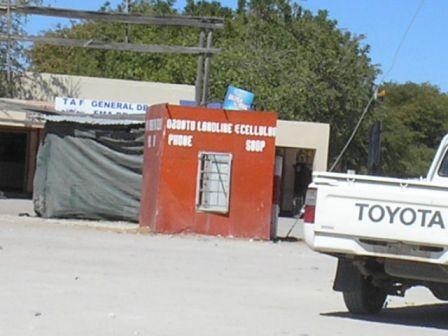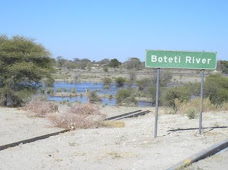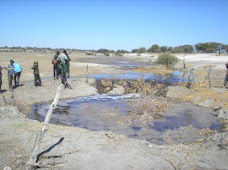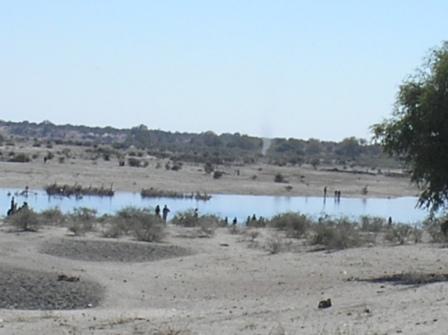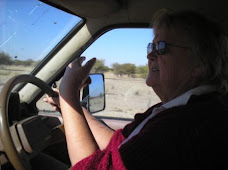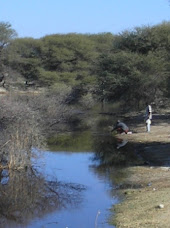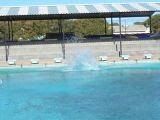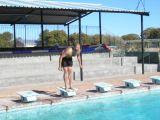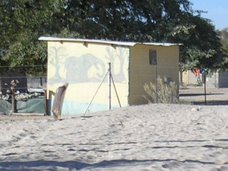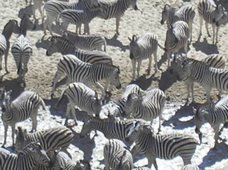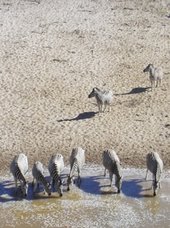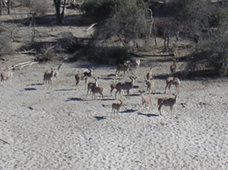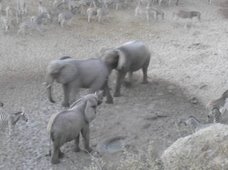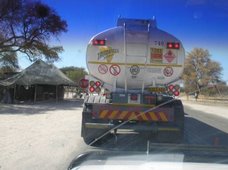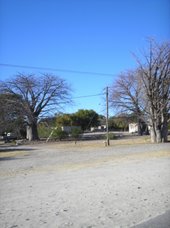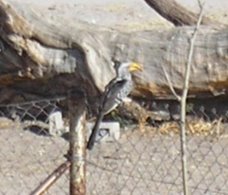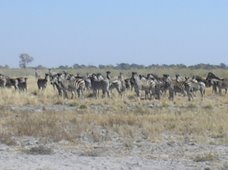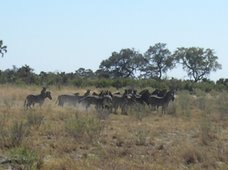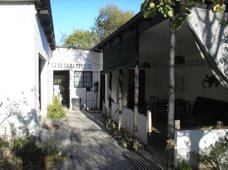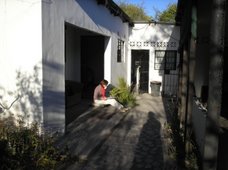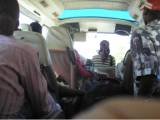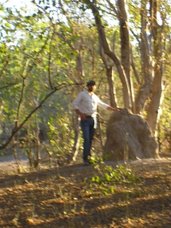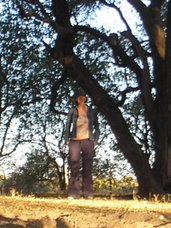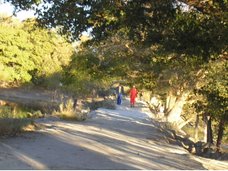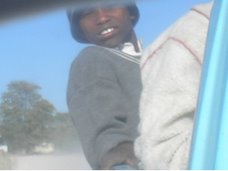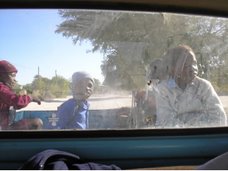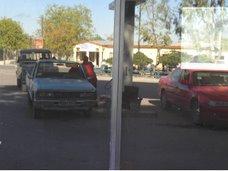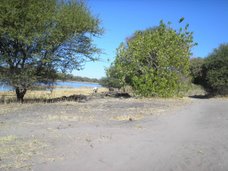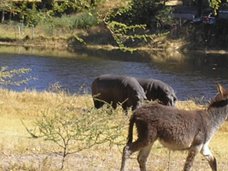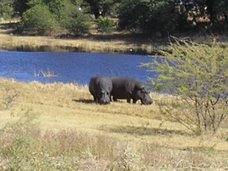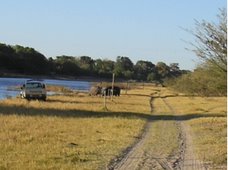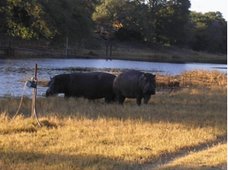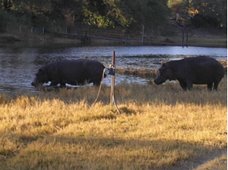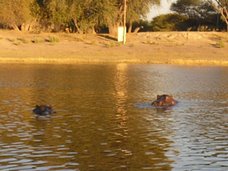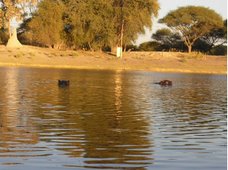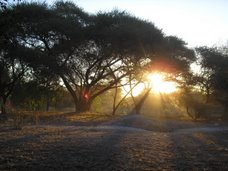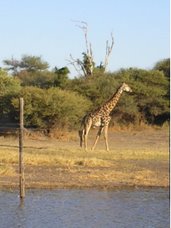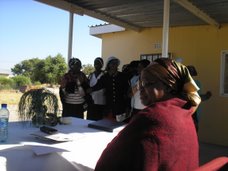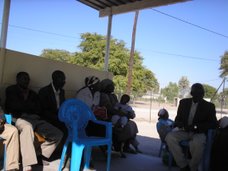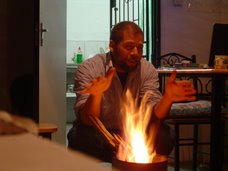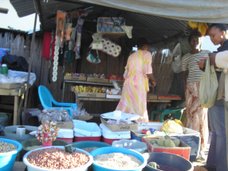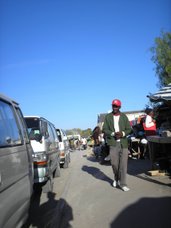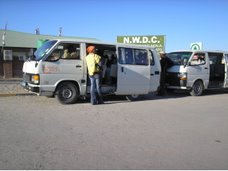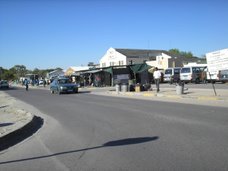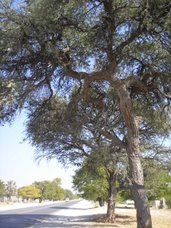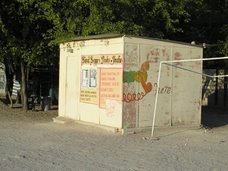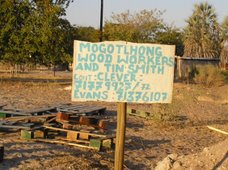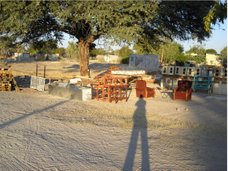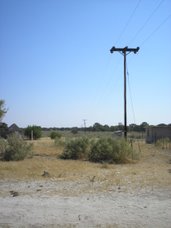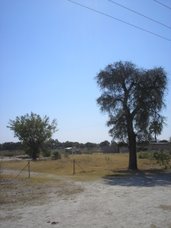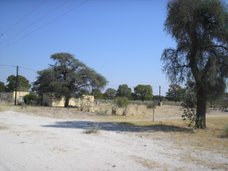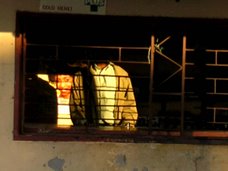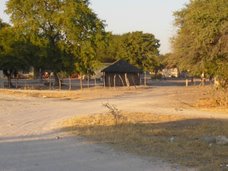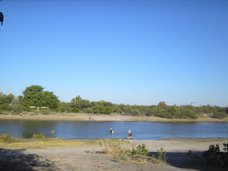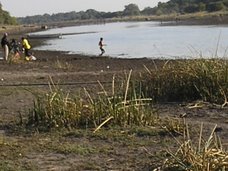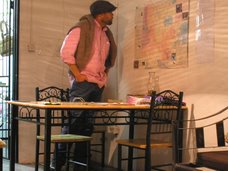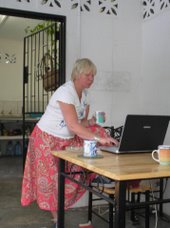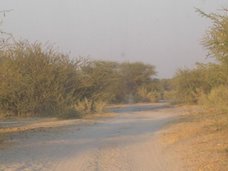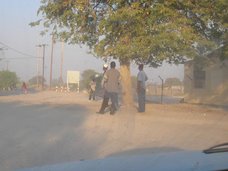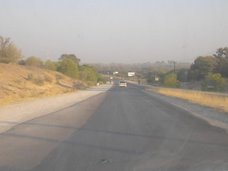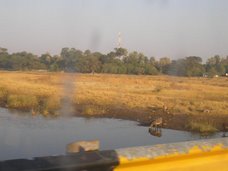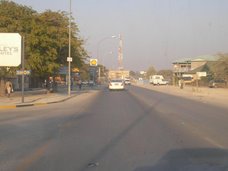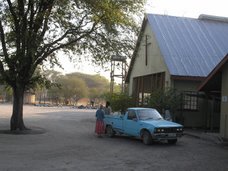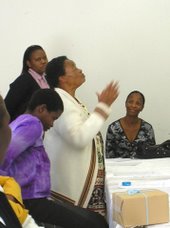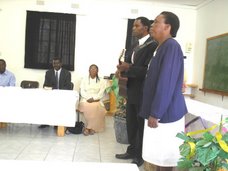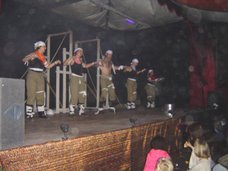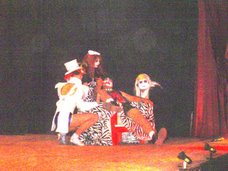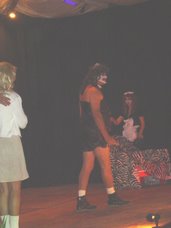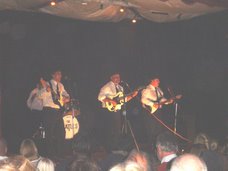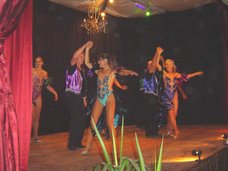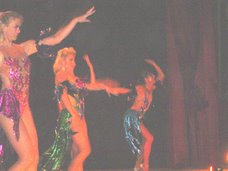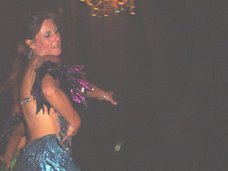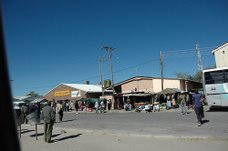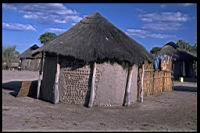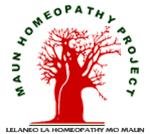I've been in Maun for exactly one week now. It's Sunday afternoon and I've walkwd into town. It takes about 45 minutes along the main road. It's a nice walk, Sedia road is lined with compounds and big spreading trees, it has a good atmosphere, even at midday.
Mad Dogs And Englishmen
Today is Sunday. We've got the whole day to ourselves. I actually had a lie in until 8.30 this morning but I got out of bed as i didn't want to waste my day off. Last night I walked back into town along Sedia road in the evening light as busineses were beginning to close down and the Sedia road bars began to warm up.
It was 11.45 when I finally left our compound and walked back, out across the dry Thalakwe river bed which runs behind the compound. I was also scouting to see whether our backie (pick up truck) would cope with crossing the river bed and negotiating the sandy banks leading up to Big Tree combi stop on the Sedia road.
What's Sedia Road?
Sedia road is the long straight roadwhich runs west out of Maun, roughly parallel to the river. If we could cross the river on our backie and get onto Sedia road we'd avoid a really dusty circuitous route in the mornings and evenings.
As I said, the road is tree lined in the typically African widely spaced way. On either sides are home compounds often with a little business attached. This seems to be the metal workers quarter as there are about 3 aluminium and tin workers, an equal number of welders & at least 2 mechanics that's in the 45 minute walk between big tree and new mall. There's a couple of bars, at least four so it makes for a varied lanscape. I was hoping I'd be able to upload my phot's of Sedia road today but someone seems to have removed Microsoft publisher from this computer so i can't save my photo's a small file which is easy to upload. There's also the airport. Running parallel to the north of Sedia road is Maun airport.
My Week
Tuesday we went to WAR (WoMen Against Rape). As I'm sure you'll understand I didn't see many of the patients there but I had a chance to see how the place was set up and feel it's atmosphere. It was actually quite familiar. It had the same atmosphere as many of the projects i'd worked with in London when I was with the Tuffnell Park NHS. So, I feel comfortable working there.
Private Clinic
Tuesday afternoon we have a private clinic in the Okavango Pharmacy in the centre of town. This didn't happen because most of our patients for that day were ex-pats and they were tied up with organising the charity event at the Sports Bar, which is also on Sedia Road.
Sports Bar Royal Variety Charity Show
So, Tuesday we got to go home early. This worked out well for Julia an I as we had to get home file things and such, have a bite to eat and get washed and changed for the evenings entertainment. Tickets were 180 Pula each which works out as roughly 18 Pounds! And this went to charity.
As an incentive a 'bottemless pot' of soup was offered and it was very welcome as it was a cool desert night. All of Maun society were there, whether Batswana or Ex-Pat. Marty, our land-lady who we wnt with told us that she'd introduce us only to the people worth knowing . That ammounted to two people and I only remember one of them as he was Hilary's husband.
So there we are sitting under a ceiling of coloured cloth a good 15 or 20 feet above our heads, facing a stage surrounded by swags of red velvet in the true theatrical style. With real working curtains.
One of the most curious things about the performance was the inter act words given by the comperes. The man an urbane character built along the lines of 'The Great Suprendo' but with less hair and his partner a spiky Afrikaans vrau who seemed to have forgotten that she was no longer in front of a class of children, who kept telling the children in the front row to keep quiet. She ended up getting a well earned booo!
So, their inter act commentary, as well as containing the usual jokes at the audiences expense gave a slightly over detailed explaination of what we were about to witness. On reflection this was possibly for thwe benefit of the Batswana members of the audience, a gesture of courtsesy perhaps, except the explaination wasn't given in Setswana. The take home message is, before each act there was about 5 minutes at least of detailed explaination giving the history of the piece and a little about those who first performed it. That struck me as an interesting way to go about things.
They don't know when to stop
Just when it looked as though the last act had been seen there came another. I was sitting there thinking, people who are capabe of this are capable of anything. Everyone really pot their hearts into what they were doing. Even the poor guys who had to entertain us during really long scene changes and had to resort to singing a rude children's rhyme about a farmer in a field sitting on a rock whith his hands in his pocket playing with his keys etc, etc, you know the sort of thing, to get a laugh.
